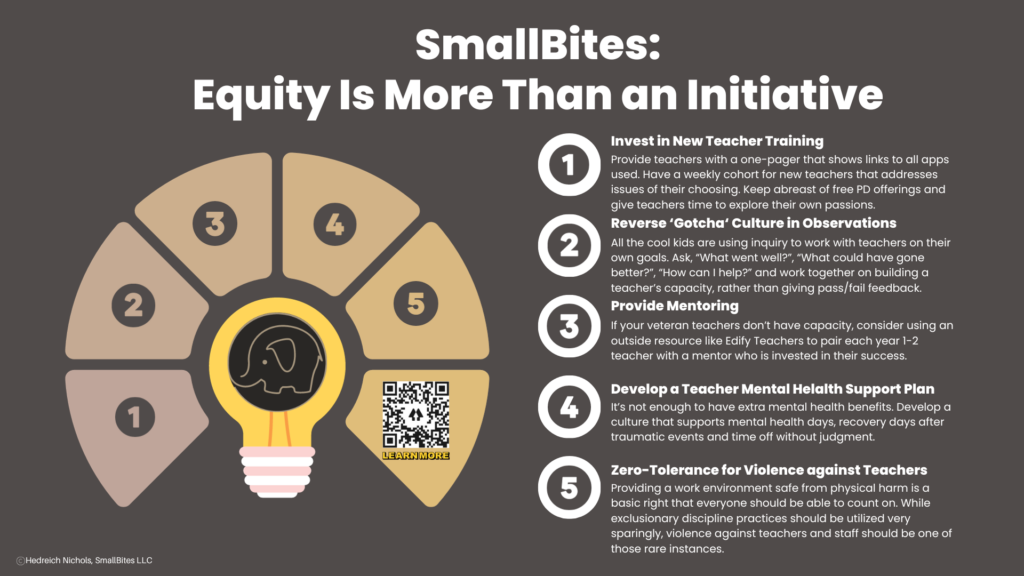(Teacher-Tired) Educator Encouragement
The saying goes, “there’s no tired like teacher tired.” Teachers have exhausting schedules, and if you’ve ever time stamped a teacher day, you’ll know that a teacher day is simply impossible to get through in a day. That feeling is not confined to the classroom. For those of us who have deeply held beliefs about what a student-centered school environment looks like, feels like and ignites learning like, education can be tough, whatever the role.
I am humbled at how incremental the change is in the grand scheme of things. That humility makes me want to cry into a glass of milk. That humble place is also a place of remembering: “Define Your Why“, as author and educator Barbara Bray says. Either I believe that I can be an agent of change one small bite at a time, or I don’t. The system needs to change, that’s why I do what I do. And so, I’ll dry my tears and start over. Because futility and hopelessness are just not an option.
Care for a few ideas to help get you through? Read on.
Encouragement from @DorisASantoro – Rise up with strategies and information on burnout vs. teacher demoralization in this Edweek article that helps you understand what you’re dealing with and how to deal with it.
Encouragement from @PlanBookCom – Rise up, if you’ve decided that burnout is where you’re heading, with these strategies from PlanBook and don’t be afraid to reach out for help.
Encouragement from @Angela_Watson – Rise up and Say goodbye to Teacher Tired with this article and resources from Angela Watson. I learned about her 40 hour work week resources from Cult of Pedagogy. Some resources are paid, but even the free ones will revolutionize the way you spend your time.
Encouragement from @weareteachers – Rise up and giggle. Sometimes, laughter is the best medicine, and we teachers are a funny lot! Start here then follow them on Twitter and Instagram. Cause, when you run out of tears, sometimes all you can do is laugh.
Encouragement from M.L. Brown – If laughter and strategies no longer work, rise up with this Medium article from an educator who decided that enough was enough. For those who have made that decision, let’s be supportive, knowing that sometimes, enough really is enough.
Note: This episode is an edited rebroadcast of SmallBites LIVE: Fighting Feelings of Futility
(Teacher-Tired) Educator Encouragement Read More »

